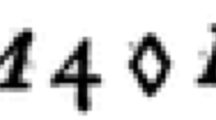Abstract
Algebra, in particular commutative algebra, is applied here to provide a general unified solution to nonlinear systems of equations encountered in geodesy. Starting with the “Abelian group”, the “polynomial ring” is defined and used to form generators of ideals. By applying Buchberger or polynomial resultant algorithms, these generators are reduced to simple structures often comprising a univariate polynomial in one of the unknowns. The advantage of the proposed unified approach is that it provides exact solutions to geodetic nonlinear systems of equations without the traditional requirements of linearization, iterations or approximate starting values. The commutative algebraic approach therefore alleviates the need for isolated exact solutions to various geodetic nonlinear systems of equations. The procedure is applied to GPS meteorology to compute refraction angles, and Helmert’s one-to-one mapping of topographical points onto the reference ellipsoid.
Similar content being viewed by others
Author information
Authors and Affiliations
Corresponding author
Rights and permissions
About this article
Cite this article
Awange, J., Grafarend, E., Fukuda, Y. et al. The application of commutative algebra to geodesy: two examples. J Geodesy 79, 93–102 (2005). https://doi.org/10.1007/s00190-005-0446-1
Received:
Accepted:
Published:
Issue Date:
DOI: https://doi.org/10.1007/s00190-005-0446-1




